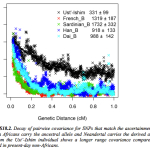
Ancient Ust’-Ishim DNA as Seen From the Americas
Nature 514, 445–449 (23 October 2014) doi:10.1038/nature13810 Genome sequence of a 45,000-year-old modern human from western Siberia Qiaomei Fu, Heng Li, Priya Moorjani, Flora Jay, Sergey M. Slepchenko, Aleksei A. Bondarev, Philip L. F. Johnson, Ayinuer Aximu-Petri, Kay Prufer, Cesare de Filippo,…
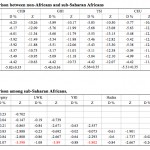
Neandertal Admixture in Africans: A Back-Migration to Sub-Saharan Africa Confirmed
Genome Biology and Evolution 2013 Oct 25. Apparent Variation in Neanderthal Admixture among African Populations is Consistent with Gene Flow from non-African Populations. Shuoguo Wang, Joseph Lachance, Sarah Tishkoff, Jody Hey, and Jinchuan Xing Abstract Recent studies have found evidence of…
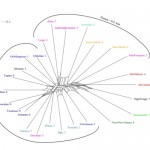
Stability vs. Diversity: A Novel Method for Analyzing Worldwide Linguistic Structures
PLoS ONE 7(9), 2012: e45198. doi:10.1371/journal.pone.0045198 Abstract Profiles of Structural Stability Point to Universal Tendencies, Family-Specific Factors, and Ancient Connections between Languages Dan Dediu, and Stephen C. Levinson Language is the best example of a cultural evolutionary system, able to…
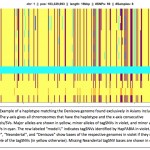
Rare Haplotypes in Koreans: Evidence for a Back Migration into Africa?
CAMDA 2012 Conference, July 13, 2012 Rare Haplotypes in the Korean Population Sepp Hochreiter, Gunter Klambauer, Gundula Povysil, and Djork‐Arné Clevert Link (Full Text PDF) These days you never know where research related to modern human origins will be reported…
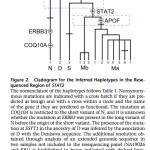
Archaic Introgression and the Derived Nature of African Lineages at STAT2 Gene
American Journal of Human Genetics 91, 2012, 265-274. http://dx.doi.org/10.1016/j.ajhg.2012.06.015. A Haplotype at STAT2 Introgressed from Neanderthals and Serves as a Candidate of Positive Selection in Papua New Guinea Fernando L. Mendez, Joseph C. Watkins, and Michael F. Hammer. Signals of…
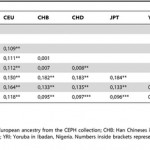
The Xavante Indians and Genetic Divergence Between American Indians and Africans
PLoS ONE 7 (8): e42702. doi:10.1371/journal.pone.0042702 Genome-Wide Analysis in Brazilian Xavante Indians Reveals Low Degree of Admixture Patricia C. Kuhn, Andréa R. V. Russo. Horimoto, José Maurício Sanches, João Paulo B. Vieira Filho, Luciana Franco, Amaury Dal Fabbro, Laercio Joel…
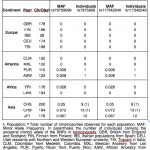
Neandertal Admixture in microRNA Genes
Molecular Biology and Evolution (27 January 2012), doi:10.1093/molbev. An Ancestral miR-1304 Allele Present in Neanderthals Regulates Genes Involved in Enamel Formation and Could Explain Dental Differences with Modern Humans Lopez-Valenzuela, Maria, Oscar Ramirez, Antonio Rosas, Samuel Garcıa-Vargas, Marco de la…
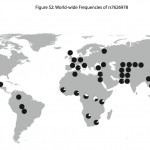
The Pygmy Enigma: Biology, Population Genetics and Linguistics
PLoS Genetics 8 (4): e1002641. doi:10.1371/journal.pgen.1002641 Patterns of Ancestry, Signatures of Natural Selection, and Genetic Association with Stature in Western African Pygmies Jarvis, Joseph P., Laura B. Scheinfeldt, Sameer Soi, Charla Lambert, Larsson Omberg, Bart Ferwerda, Alain Froment, Jean-Marie Bodo,…
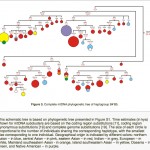
The Origin of mtDNA haplogroup B: 9-bp deletion in America, Asia and Africa
PLoS ONE 7(2) 2012: e32179. doi:10.1371/journal.pone.0032179 Complete Mitochondrial DNA Analysis of Eastern Eurasian Haplogroups Rarely Found in Populations of Northern Asia and Eastern Europe Derenko M., Malyarchuk B., Denisova G., Perkova M., Rogalla U., et al. Abstract. With the aim…
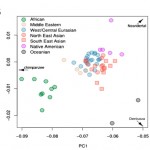
American Indians, Neanderthals and Denisovans: Insights from PCA Views
Dienekes posted a SNP PCA showing the relative position of a sample of modern human populations from the Harvard HGDP along the axes formed by Chimpanzees, Denisovans and Neanderthals. On the broad-view PCA, the red dot indicates Chimpanzees, the green…
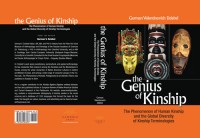
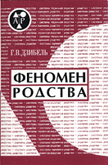
Recent Comments